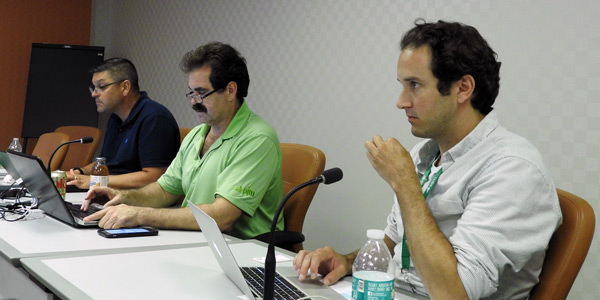By Rory D. Sweeney
VALLEY FORGE, Pa. — Progress in PJM’s special session of the Market Implementation Committee on distributed energy resources has reached a point where details matter.
Stakeholders spent much of the group’s meeting on Friday clarifying definitions, debating whether certain terms should be used and delineating what is in and out of the group’s scope.
“Just because something’s not in the Tariff doesn’t mean it’s not a defined term used in the business and a good utility practice,” Calpine’s David “Scarp” Scarpignato said. “Some of these are recognized terms from an engineer’s standpoint.”
Among the questions is whether the aggregation rules will focus on grouping small projects to reach the 100-kW minimum for participating in PJM markets or expand to cover grouping multiple larger projects that are at the same site.
“In my mind, we were talking about aggregation mostly to meet that market threshold,” said Drew Adams of A.F. Mensah. “It sounds like the aggregation discussion has expanded a little bit beyond that.”
During the discussion, stakeholders largely agreed that electric distribution companies should retain a substantial amount of control over project approval, such as defining the size, location and type of aggregation projects they will accept.
John Farber of the Delaware Public Service Commission said the group should also decide rules on whether projects can cross distribution service territories. He said it will be important to consider how electric vehicles are handled because definitions that are too restrictive could inhibit their development.
“I’m not sure how these resources are going to develop, but I’m hesitant to develop rules that are too restrictive,” Farber said.
PJM staff also presented an informal poll to determine stakeholder interests in how DER is incorporated into ancillary services markets. PJM’s Andrew Levitt said one consideration will be how much visibility the RTO should have into resources that operate behind a load. When it sells into the wholesale markets, PJM will be able to monitor its performance. However, when it is simply reducing the owner’s load, the current rules don’t provide the same information.
Levitt presented a proposed rule to require submetering of DERs at the resource before it’s tied to the load.
“This is the most substantial change in the whole proposal,” Levitt said. “Your performance of ancillary services would be measured at the DER rather than measured at the point of interconnection, as it would be under the status quo.”
The group has no meetings planned until August, when it will meet three times.





